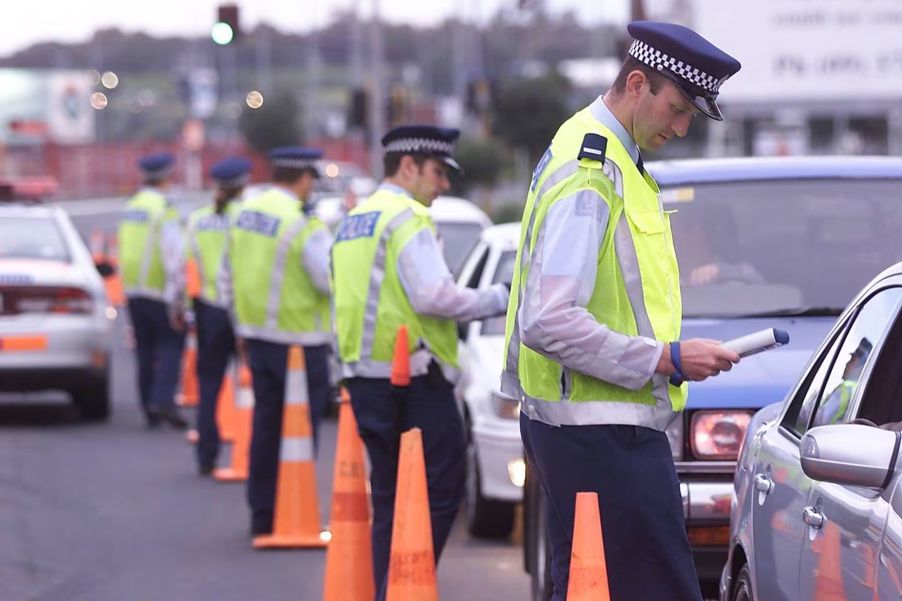More than 3 million breath tests were carried on on New Zealand motorists in 2023 - the most in a decade - and police have now revealed who and where the worst drink drivers were.
Provisional figures show there were 3,097,698 breath screening tests performed across the country in 2023, up 26 per cent from the 2.4 million completed in 2022.
The majority of the tests were recorded in the wider Auckland area by officers in the City, Waitematā, Counties Manukau and the Tamaki Makaurau Deployment Group which delivers breath testing across all three districts.
Last week police provided details about the worst offenders of 2023 to the Herald.
The driver with the highest recorded breath alcohol reading was a man in Waitematā who blew 1977 - meaning he was 6.9 times over the legal breath alcohol limit.
For drivers 20 and over, the limit is 250 micrograms of alcohol per litre of breath.
The other drivers who featured in the top 10 worst offenders include:
- A man from Wellington who blew 1963 - 6.8 times over
- A woman from Central who blew 1913 - 6.6 times over
- A man from Counties Manukau who blew 1868 - 6.5 times over
- A woman from Eastern who blew 1828 - 6.3 times over
- A man from Southern who blew 1788 - 6.2 times over
- A man from Bay of Plenty who blew 1770 - 6.1 times over
- A man from Counties Manukau who blew 1760 - 6 times over
- Two men from Wellington and Central who blew 1748 individually 5.9 times over
High breath alcohol readings - how many drinks?
While it is hard to quantify how many drinks a person has to consume to reach such high levels, a source previously told the Herald a woman arrested with a breath alcohol level of 1568 may have consumed the equivalent of 25 drinks or more.
Her result was said at the time to be be highest breath-alcohol levels recorded in New Zealand.
The then-29-year-old was arrested on a Monday evening in Waitematā. Her two small children were in the car when she was seen by other motorists “swerving into other lanes and driving off the shoulder of the road”.

Auckland teacher Joanna Winifred Wright was charged after driving with a breath-alcohol level of 1583mcg in July 2006.
At the time experts were amazed that anyone would be conscious after consuming that amount of alcohol.
Two other women were caught driving in 2006 with alcohol levels which surpassed the 2000mcg maximum limit of breath-testing equipment.
A Dunedin woman who blew more than 2000mcg later had a blood test that revealed a level of 426 milligrams per litre of blood, almost five times the legal limit of 80mg.
Three months later, Tauranga woman Lisa Rachel Bowers was convicted of driving with an identical blood-alcohol level.
At her sentencing, she read an apology letter to the court saying she was ashamed and embarrassed about what had happened and grateful no one had been physically hurt.
Police vow to keep up “tireless” work to protect road users
Superintendent Steve Greally said police had revised its approach to breath testing in recent years which allowed for “better balance, targeting specific risk times and locations with conducting high-volume testing to achieve a greater general deterrence effect”.
He said that approach - among other prevention work - helped show the police commitment to “keeping everyone safe on our roads”.

“(That is) evident in the number of road deaths in 2023 being 31 fewer than the previous year,” said Greally.
“Police is fully committed to working alongside our partners to help prevent death and serious injury on our roads.
“Being visible and conducting breath tests whenever we stop a vehicle is one way we help ensure this.”
He said the 2023 data was a credit to police across the country who " tirelessly on preventing and enforcing the law to ensure all road users remain safe”.
“We’ve seen the impact that drink-driving has on families, and any death is one death too many,” he said.
As of today, provisional figures show that in 2023 there were 341 deaths from 304 crashes across New Zealand compared with 372 in 2022
“Speed, alcohol and drugs and distraction are still the main causes of death and serious injury.” said a police spokesperson earlier this month.

Breath tests in 2023 by police district:
- Northland - 94,921
- Waitemata - 90,910
- Auckland City - 99,120
- Counties/Manukau - 158,282
- Waikato - 453,603
- Bay of Plenty - 275,626
- Eastern - 156,603
- Central - 317,497
- Wellington - 256,620
- Tasman - 148,822
- Canterbury - 246,853
- Southern - 242,184
- TMDG - 477,213
- Police National Headquarters - 79,444







